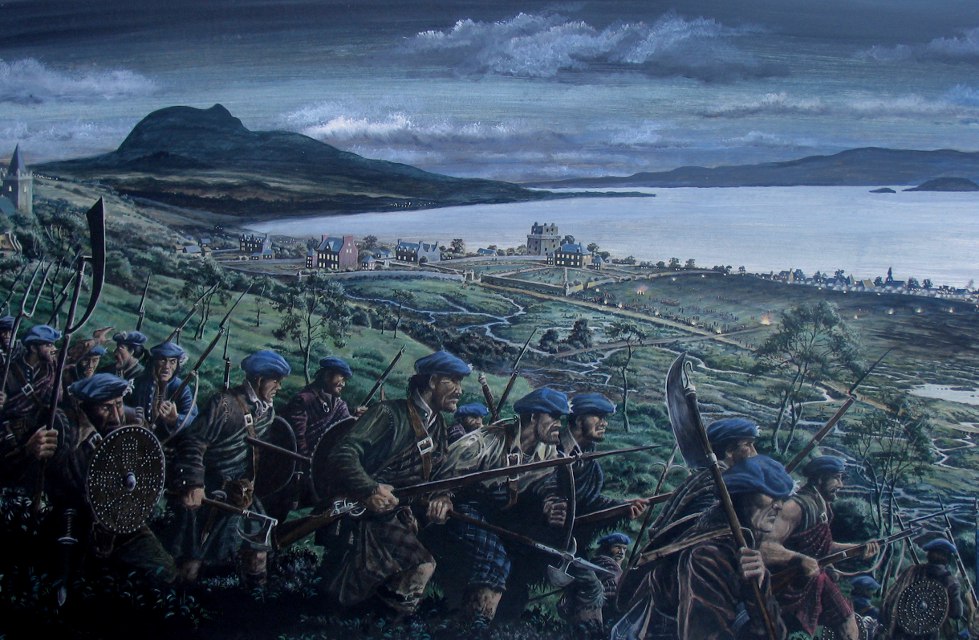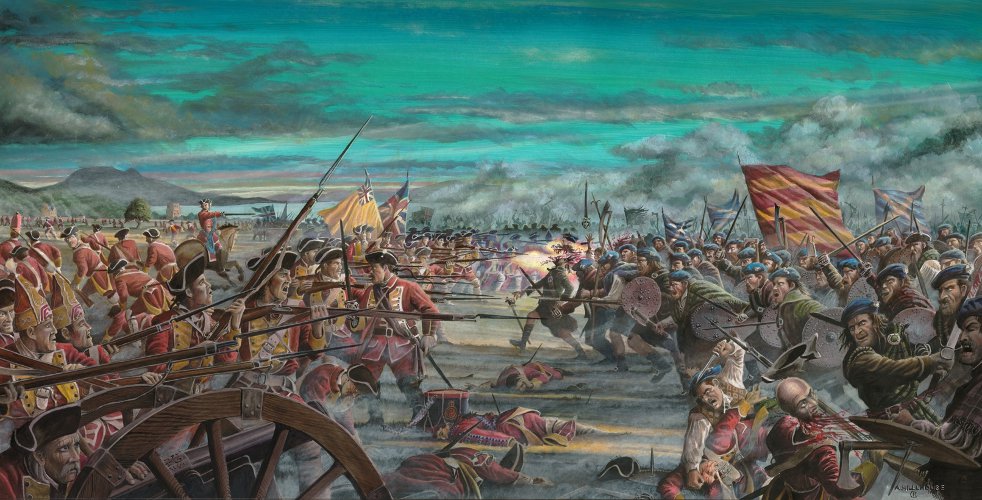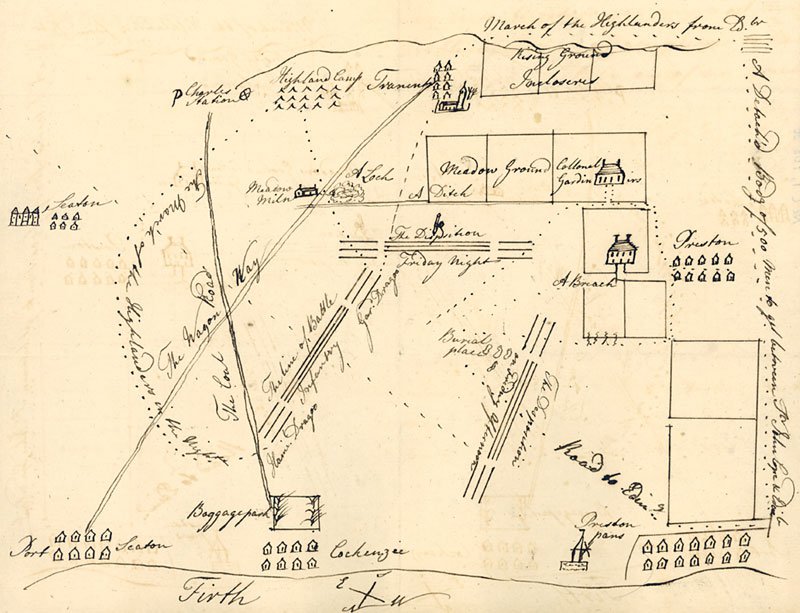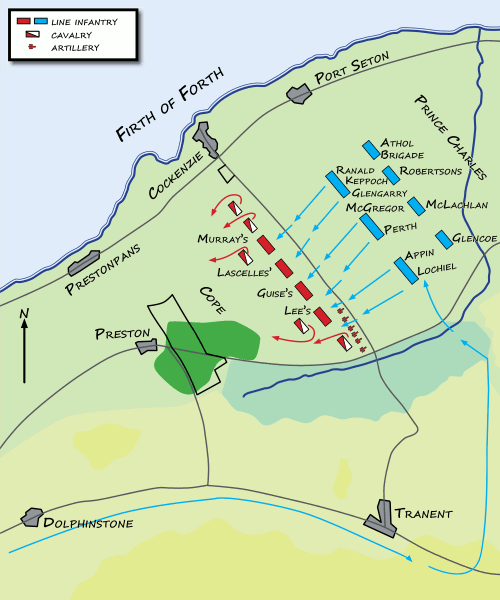After triumphantly capturing Edinburgh, Charles faced his first military test at Prestonpans as a force of British troops mustered to do battle. Defeat would spell the end for his hopes of restoring the Stuart monarchy.

Battle of Prestonpans - the Riggonhead Night March by Andrew Hillhouse. On the eve of battle, the Jacobite army secretly moves to take up position to the east of the assembled government forces in preparation for a surprise attack timed for dawn.

Battle of Prestonpans by Andrew Hillhouse. The Jacobites rush in to overwhelm the government army, with Clan Cameron capturing the enemy artillery. The government line begins to falter and will soon dissolve into a complete rout.

Battle of Prestonpans - the surrender of Cockenzie House by Andrew Hillhouse. The earlier battle lost, the detachment of government troops left guarding General Cope's baggage train at nearby Cockenzie House are persuaded to surrender.
Charles's army marched into Edinburgh on 17 September 1745. General Cope landed at Dunbar the same day with a force of 2,300 men and 6 guns and made a stand at Prestonpans with a defensive position he thought to be ideal whilst unaware of a route past Riggonhead Farm towards Seaton.
The Riggonhead Defile
A local farmer's son, Robert Anderson, knowing the area, convinced Charles's Lieutenant General Lord George Murray to take a narrow route through the marshlands. At 4.00am Murray moved the entire force of 2,500 men, three abreast, along this route known as the Riggonhead Defile in total silence to the east of General Cope's army.
The start of the 'Forty Five'
At 6.00am the Jacobite army attacked. Cope's army was put to flight and lost nearly half its effective strength in prisoners. Colonel Gardiner, from nearby Bankton House, made a stand with 17 Redcoats whilst the General rode off to persuade his dragoons to return to the field, leaving the Colonel to stem the rout. He was pulled from his horse under a thorntree on the southern edge of the battlefield, mortally wounded and unable to rise. His followers laid down their arms and the entire Government army succumbed.
After the battle General Cope's Baggage Train at Cockenzie House was captured with only a single shot fired. It contained muskets and ammunition and £5000 worth of gold coins, all of great significance for the Prince's next move in the invasion of England.
Following the battle most of Scotland was in Prince Charles's hands except Edinburgh Castle which was held by General Guest and Stirling Castle held by General Blakeney.
Date: 21 September 1745
Jacobites: George Murray
Government: Sir John Cope

Plan of the positions of the opposing troops at the Battle of Preston Pans, enclosed in Brigadier William Blakeney's letter to Henry Pelham, written at Stirling Castle, 18 Oct. 1745. (Ne C 1708/4 © The University of Nottingham)

Sir John Cope (1690-1760), by William Aikman
© National Trust Collections (355481)

The Entrance of Prince Charles Edward Stuart to Edinburgh after Prestonpans by Thomas Duncan (1838).
© Perth Museum & Art Gallery, Perth & Kinross Council
